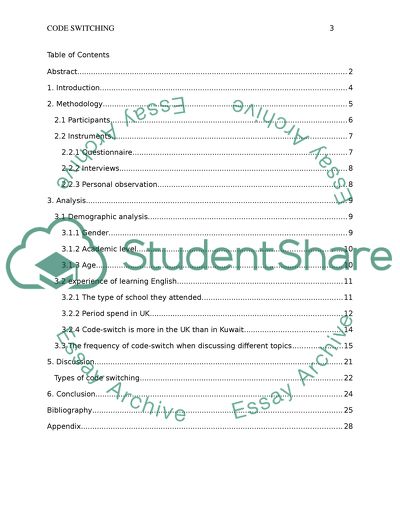Cite this document
(“Code-switching among students in the UK Essay Example | Topics and Well Written Essays - 3000 words”, n.d.)
Code-switching among students in the UK Essay Example | Topics and Well Written Essays - 3000 words. Retrieved from https://studentshare.org/humanitarian/1639411-code-switching-among-students-in-the-uk
Code-switching among students in the UK Essay Example | Topics and Well Written Essays - 3000 words. Retrieved from https://studentshare.org/humanitarian/1639411-code-switching-among-students-in-the-uk
(Code-Switching Among Students in the UK Essay Example | Topics and Well Written Essays - 3000 Words)
Code-Switching Among Students in the UK Essay Example | Topics and Well Written Essays - 3000 Words. https://studentshare.org/humanitarian/1639411-code-switching-among-students-in-the-uk.
Code-Switching Among Students in the UK Essay Example | Topics and Well Written Essays - 3000 Words. https://studentshare.org/humanitarian/1639411-code-switching-among-students-in-the-uk.
“Code-Switching Among Students in the UK Essay Example | Topics and Well Written Essays - 3000 Words”, n.d. https://studentshare.org/humanitarian/1639411-code-switching-among-students-in-the-uk.


